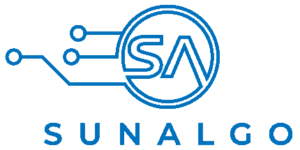What is Software Product Development?
Software product development is the process of developing software. It includes requirements analysis, design, coding, testing, and deployment.
Software product development is a process that typically involves many people with different skill sets. It starts with requirements analysis and design and then moves on to coding and testing before finally deploying the product.
Why is Software Product Development important?
Individuality
Custom software product development is an opportunity for companies to create a product that is tailored to their needs. It gives them the opportunity to create something that is unique and individualized. Custom software development can be used in many different industries and by many different types of businesses, which makes it a great option for any company that wants to stand out from the competition.
Autonomy
Software product development provides autonomy in different ways. One way is that the development process is not constrained by time and money. The developers can work on a project until it is complete, without being constrained by deadlines or budgets.
The autonomy of it also comes from the fact that there are no employees to manage and no meetings to attend. Software developers can work from home and spend their day in peace, with minimal interruption from colleagues, bosses, or clients.
Competitiveness
Software product development has been a major contributor to the competitiveness of organizations.
The software industry has grown exponentially in the last few years. According to Gartner, global spending on software is projected to reach $487 billion in 2017, which is an increase of 4.4% over 2016.The software industry is expected to grow at a compound annual growth rate (CAGR) of 3.5% from 2017-2020 and will reach $630 billion by 2020.
The growth in this industry can be attributed to the increased demand for digitalization and automation which are leading to higher productivity levels and better customer experience respectively.
Flexibility
Software product development provides flexibility because it is not constrained by the traditional methods of development. It offers an alternative to waterfall models and iterative models. In product software development, it is not built in a linear manner. Instead, it is built in an iterative manner that allows for changes to be made at any point in time.
Software product development also provides flexibility by allowing it to be developed incrementally. This allows for it to be released as soon as they are ready without having to wait until all features are fully developed before launching the product.
Profitability
Software product development can be profitable if the following are met:
- It is of high quality and solves a problem that people are willing to pay for.
- It is marketed in a way that customers know about it and it is easy to buy.
- The company has enough time to turn the sales into profit before they have to pay back its debts.
How is software product development done?
Idea
Idea generation is an important phase in the software development process. It helps to create a pool of ideas for the product, which can be narrowed down to the best one.
In this phase, it is important to identify and explore different aspects of the problem that needs to be solved. This will help generate a number of ideas on how to solve it. These ideas are then evaluated and prioritized using various criteria like feasibility, complexity, scalability etc.
The idea generation process can be done in a structured way by following these steps:
– Brainstorming: Generating as many possible solutions as possible without any constraints or limitations
– Ideation: Selecting a few promising solutions from brainstorming and exploring them in more detail
– Evaluation: Evaluating and prioritizing these solutions based on various criteria
Requirement Analysis
Requirement analysis is the process of documenting, researching, and defining the requirements for a software product. The requirements are typically in the form of user stories or use cases.
Requirement analysis is an important part of its development because it informs decisions about what to build. It provides a clear understanding of what the customer needs and wants from the product, as well as how it should be built.
Architectural Design
Architectural design is a process that software developers use to create a blueprint for their products. It is the process of designing the system, its components, and how they interact together. The goal of this process is to create a design that will be easy to implement and maintain in the long term.
The architectural design phase can be divided into two parts: high-level architecture and low-level architecture. High-level architecture is about deciding what type of system you want to build, what framework you will use, how many servers it will need, etc. Low-level architecture is about deciding how software modules will work together in order to make up your system – which specific modules are needed and how they should interact with each other.
About The Author: Rohit Layal
 Rohit is a brand Strategist, Digital Marketer, and Business Development Specialist. Strong professional with a Bachelor’s degree in Business Administration, SunAlgo Editorial Team comprises a diverse and talented team of writers, researchers and subject matter experts equipped with SunAlgo’s data and insights to deliver useful information to help guide your journey through the software and app development process.
Rohit is a brand Strategist, Digital Marketer, and Business Development Specialist. Strong professional with a Bachelor’s degree in Business Administration, SunAlgo Editorial Team comprises a diverse and talented team of writers, researchers and subject matter experts equipped with SunAlgo’s data and insights to deliver useful information to help guide your journey through the software and app development process.

